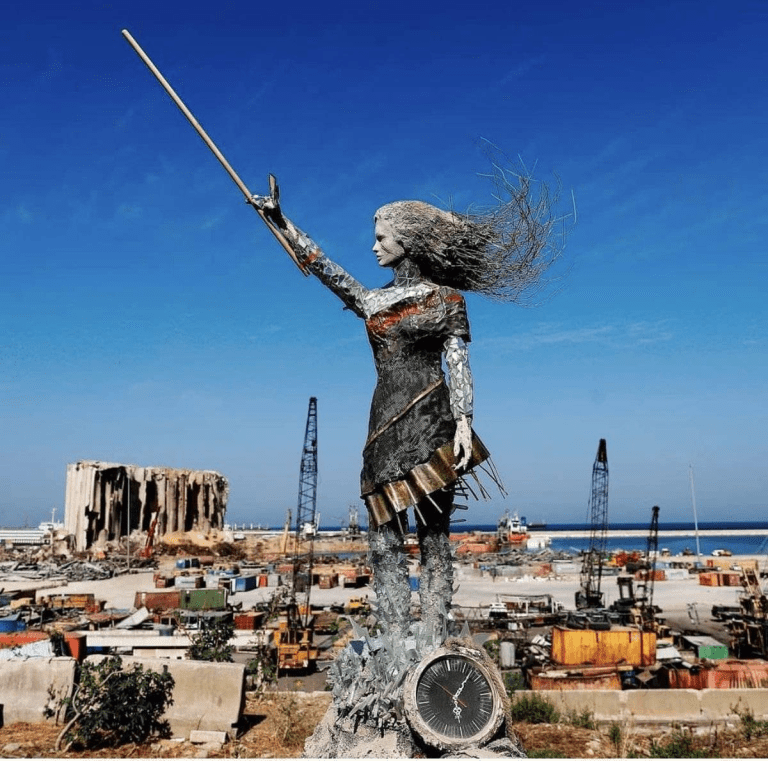On August 4, 2020, one of the largest non-nuclear explosions in modern history shook Beirut. Over 200 people were killed, thousands were injured, and much of the city’s port area was reduced to rubble.
In the aftermath, Lebanon’s art scene—already vibrant and politically charged—channeled its collective grief into visual tributes that captured the scale of loss and the urgency to remember. Here are five striking pieces that emerged from that moment of devastation:
“Gibran Khalil Gibran” – Dia Mrad
A photograph that quickly became a symbol of the blast’s emotional weight. Captured by Dia Mrad, it frames a mural of Gibran Khalil Gibran through the wreckage of a destroyed building. The author’s painted face looks out with haunting calm—resigned and devastated.

“The Explosion” – Tagreed Darghouth
Known for tackling harsh realities, Tagreed Darghouth paints the moment of the explosion not just as a scene, but as a rupture. Her brushstrokes swirl around the iconic silos in shades of smoke and dust. The piece is almost suffocating—deliberately so. It demands you stand inside the chaos.
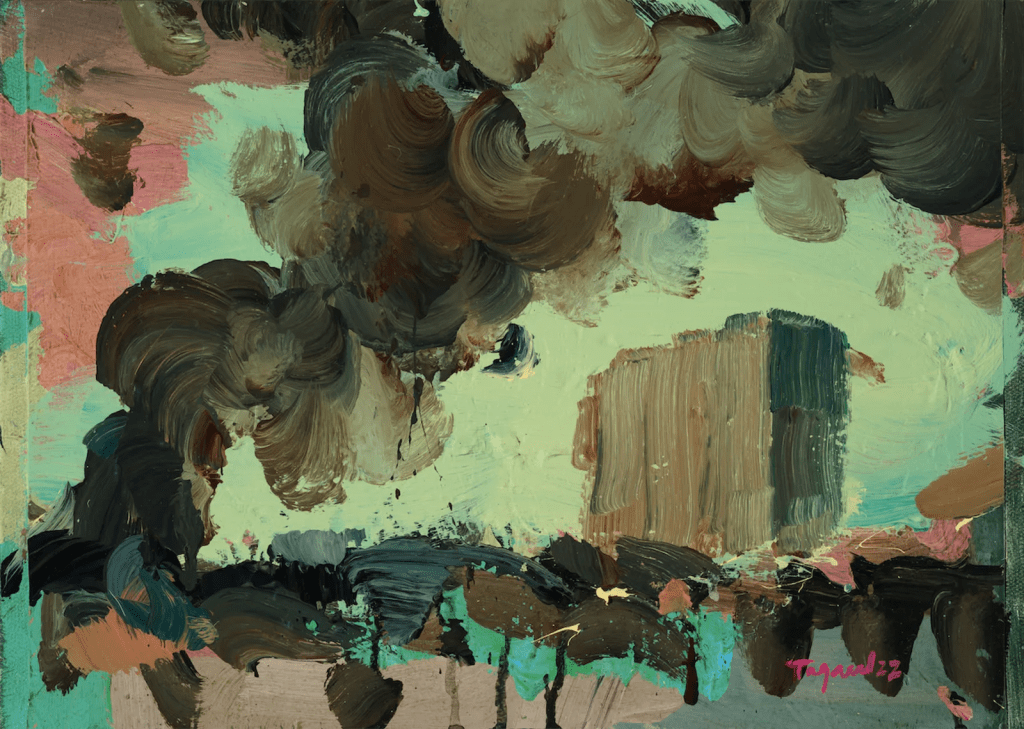
“The Lady Liberty of Lebanon” – Hayat Nazer
Assembled from broken glass, metal, and rubble, this sculpture, by Hayat Nazer, depicts a woman rising—hair sweeping back, arms forward, a clock frozen at 6:08 across her chest. That’s the minute the blast hit.
Many pieces in the artwork were donated by residents who lost their homes. The Lady Liberty of Lebanon isn’t just rising from ashes—she is made of them.
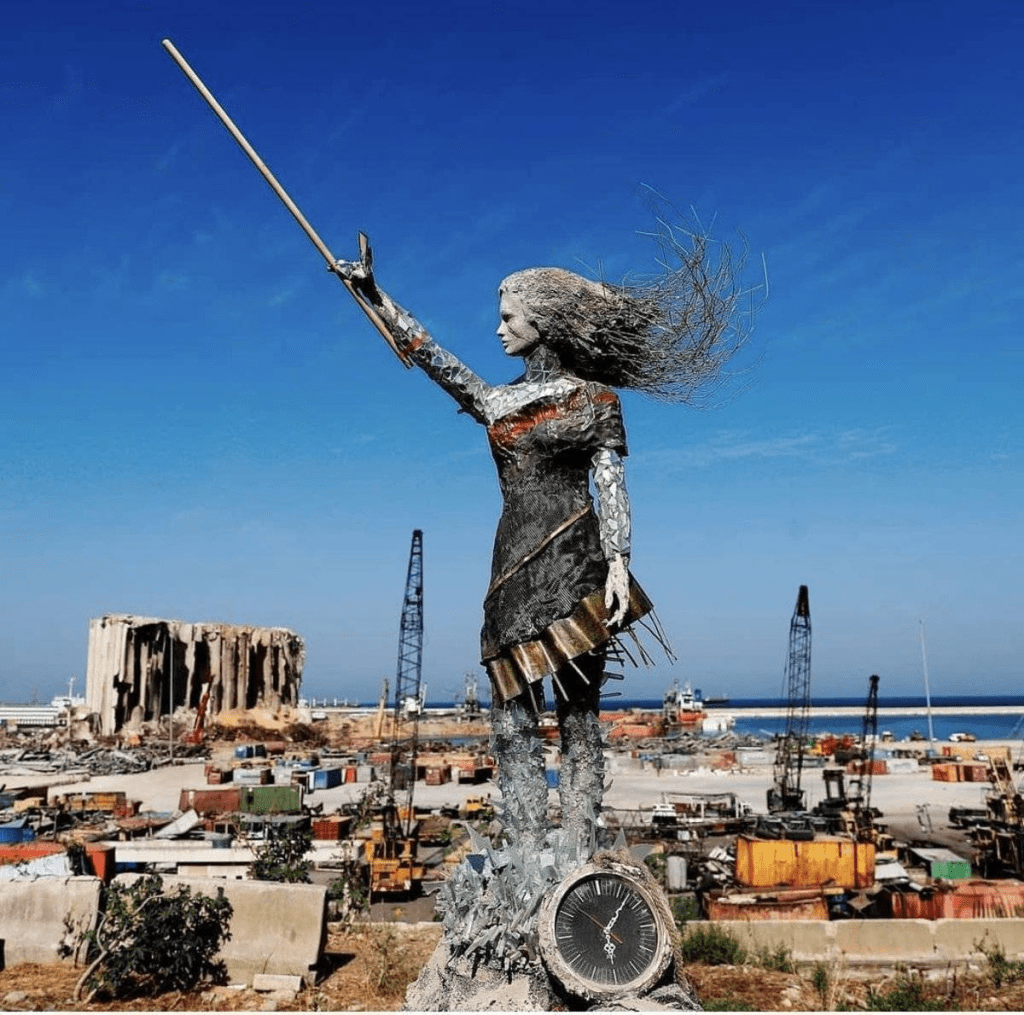
“Scary Night” – Layal Saloum
A student work that quickly gained attention, “Scary Night” reinterprets Van Gogh’s “Starry Night” through the lens of trauma. Painted in the same swirling style, it replaces stars with fire, calm skies with rising flames. It’s a visual echo of the way life changed in a moment.
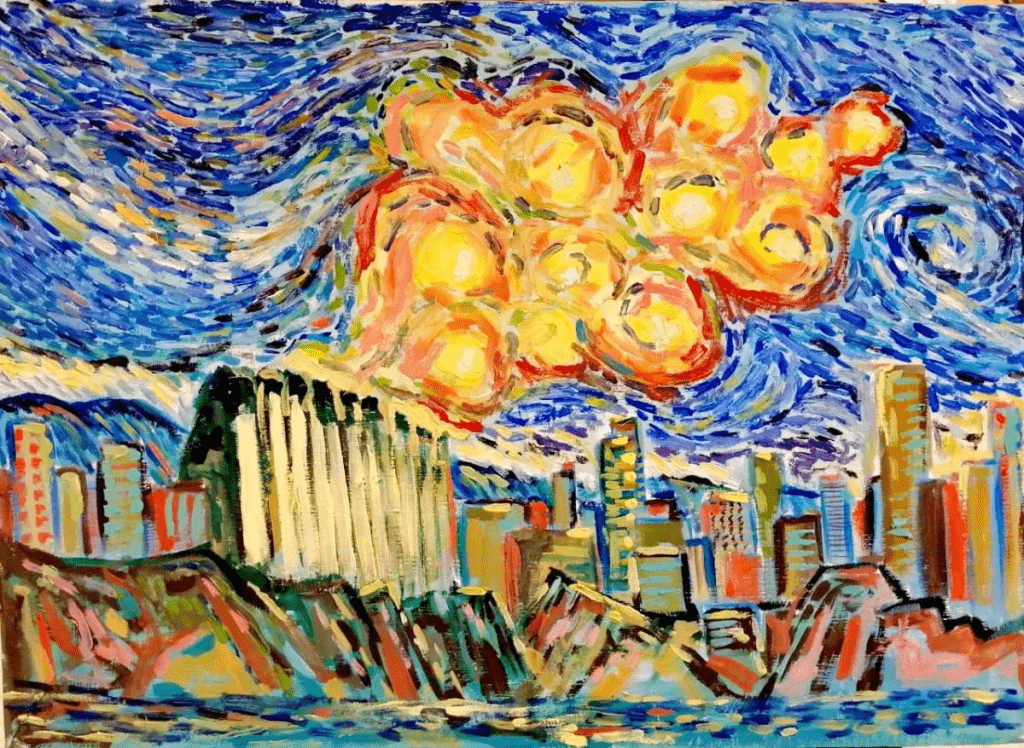
Angels – Tom Young
In Angels, British artist Tom Young paints young Lebanese volunteers clearing rubble in the aftermath of the explosion. Surrounded by broken glass and debris, they move with quiet determination. The Lebanese flag appears tucked into the ruins, and a soft yellow light touches their figures, casting long shadows on the ground.
The painting is heavy with grief but not without hope. These angels aren’t mythical—they’re real people, lifting what’s left and holding the city together.
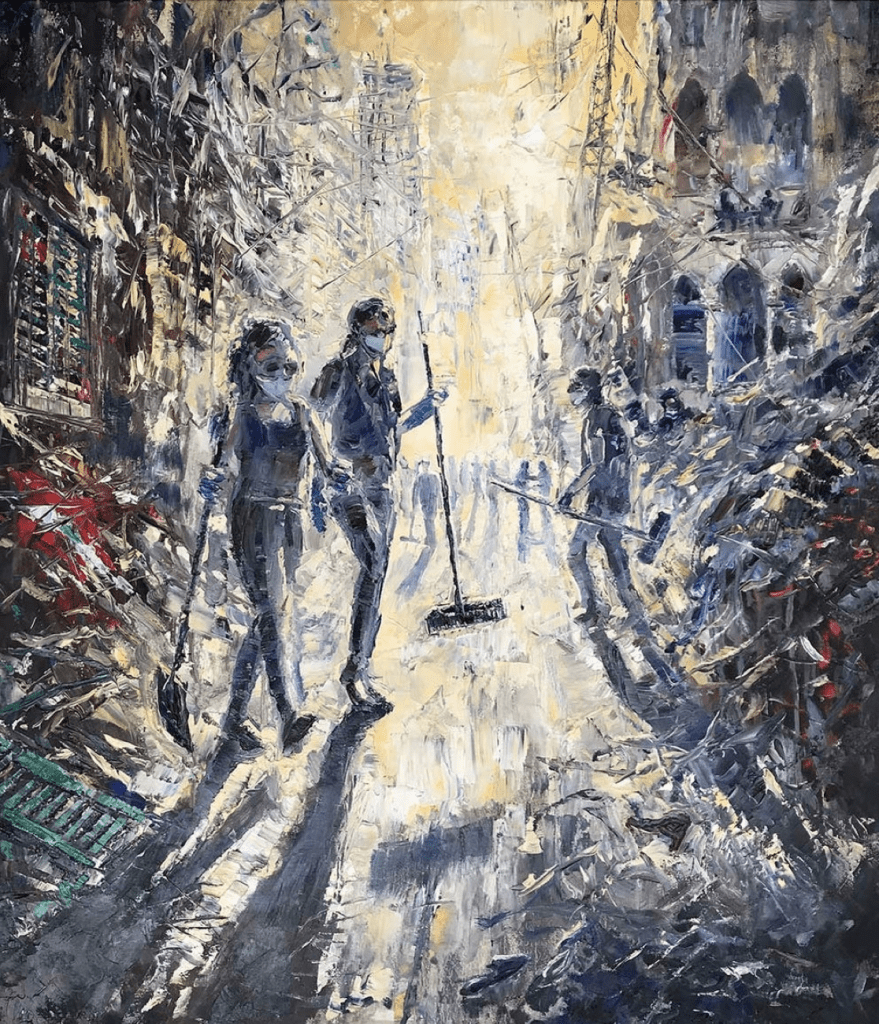
Still Remembered
Five years on, these works remain powerful reflections of a moment that reshaped Beirut. Created in the wake of destruction, they document not just loss, but the many ways people responded to it—through art, memory, and the act of simply witnessing what happened.
WE ALSO SAID: Don’t Miss…In Pictures: Looking Back on the Beirut Port Explosion a Year Later


